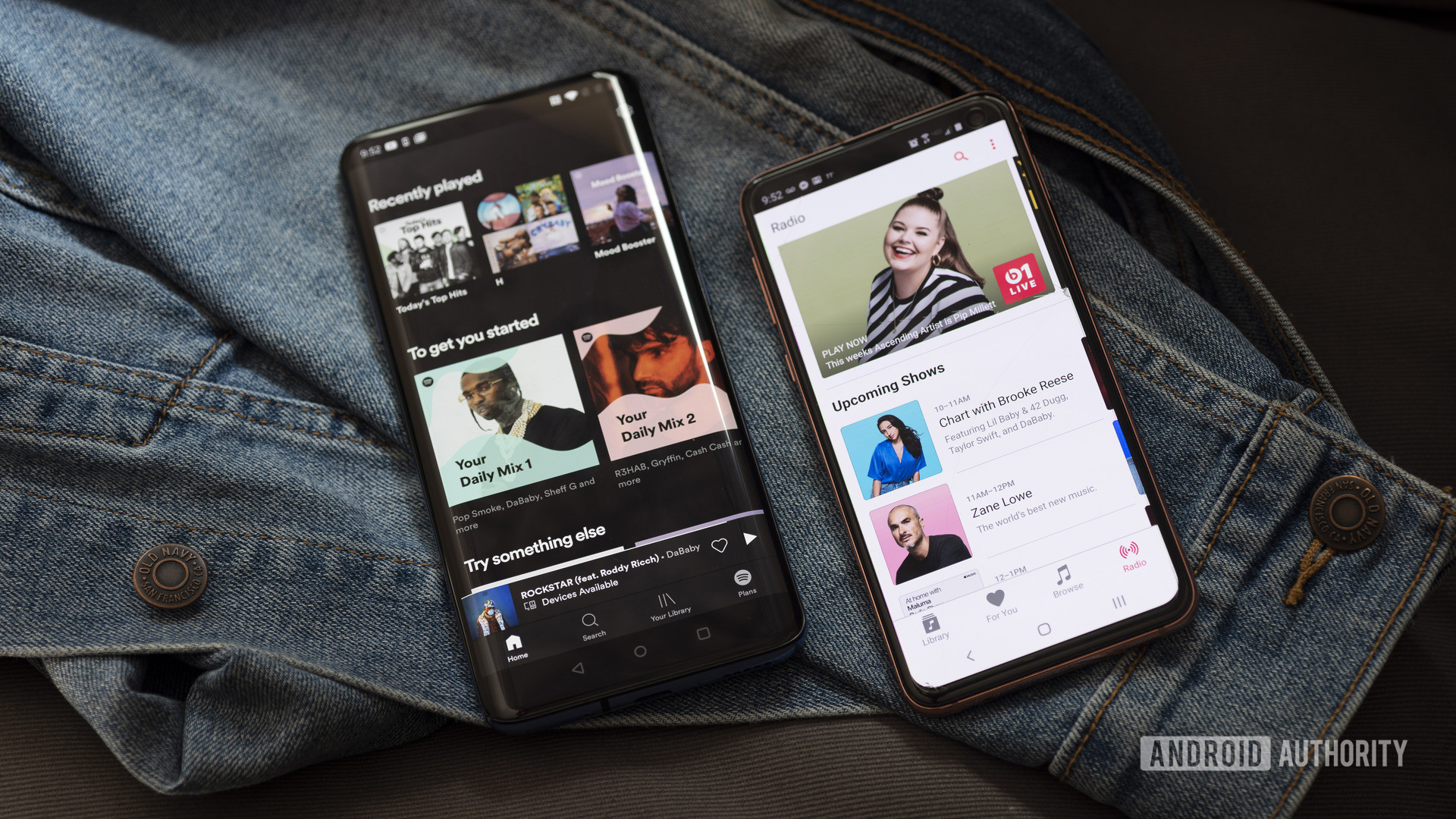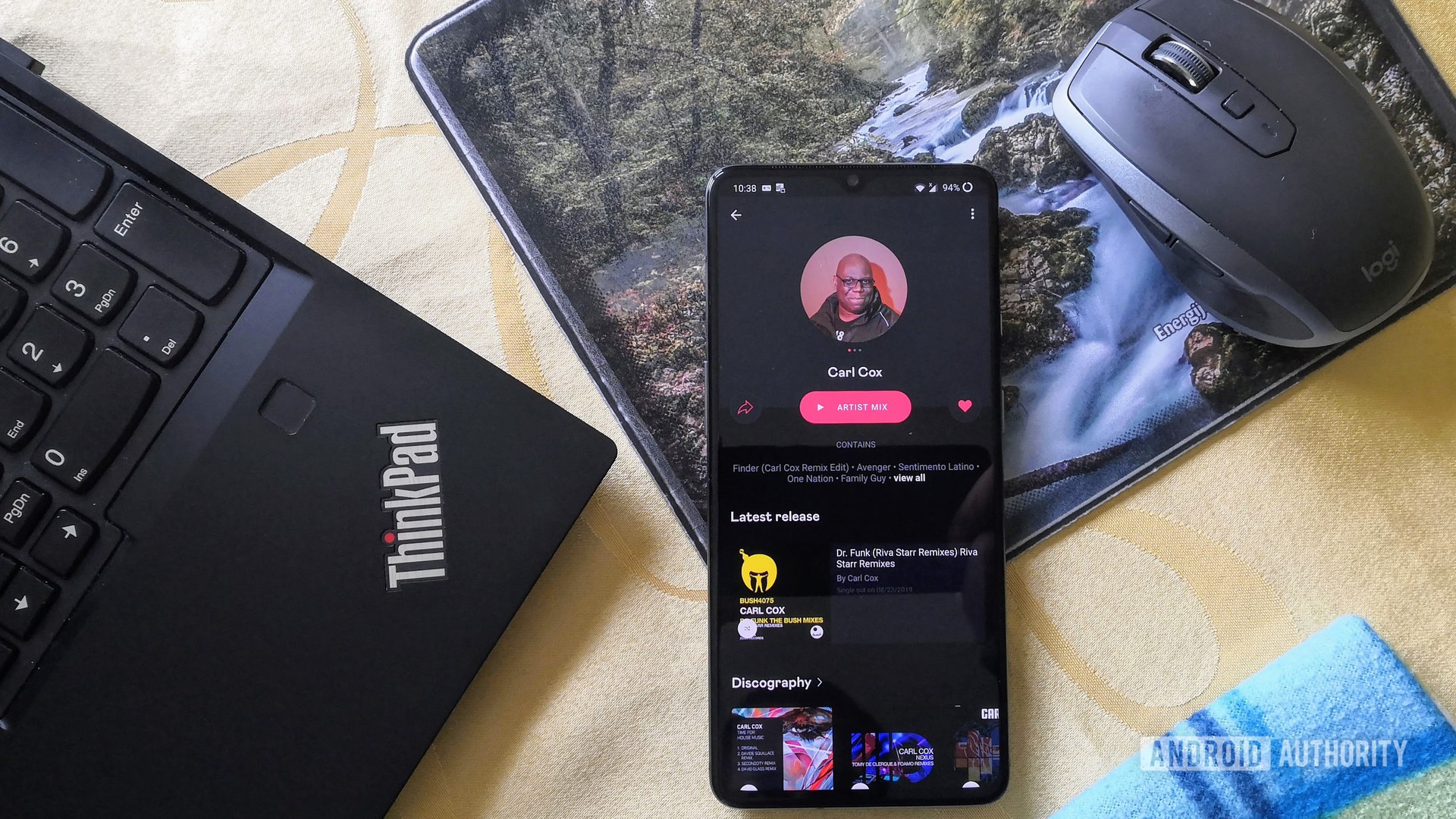Lossless music streaming: Do you really need it?

Lily Katz / Android Authority
Table of contents
Lossless music streaming is the new game in town when it comes to the best music subscriptions. Promising superior quality sound over the lossy compression formats we’ve been dealing with for years, the marketing writes itself. Although those of you still rocking a physical CD music and FLAC collections have been ahead of the streaming game for quite some time.
But, as we know, snake oil salesmen love the audio industry. So, is lossless audio streaming really worth the subscription? Here’s a rundown of the pros, cons, realities, and basically everything else you need to know about the world of lossless music streaming services.
What is lossless audio?
When you stream music from the internet, file compression is a must — at least if don’t want to eat up your data allowance in a few hours. Compression falls into two distinct categories, lossy and lossless. Lossy compression throws away some data from the original file to save space, while lossless gives you an entirely faithful reproduction with no loss when decompressed. Obviously, this ignited a long-running debate about audio quality differences.
Lossy compression is based on psychoacoustic compression designed to chop out bits of audio data you can’t hear to achieve very high compression ratios — hence the term “lossy.” Studies show that this works very well, with no perceivable difference between the source material and a high bit-rate lossy file. However, those popular ad-supported and affordable-tier music streaming options often use lossy bitrates as low as 128kbps. This may result in a perceptible loss of quality when listening through a high-quality pair of headphones.
Lossy compression saves on data but lossless offers source-exact sound quality
Lossless music files use encoding algorithms specifically designed for optimal audio compression to shrink file sizes without compromising the quality. Decompress a lossless file and you have a bit-exact version of the source. Lossless file types, including FLAC and Apple’s ALAC, can offer compression ratios as high as 50%.
| Stereo file sizes (16-bit 44.1kHZ) | WAV | AIFF | FLAC (typical) | MP3 (320Kbps) | MP3 (192Kbps) |
|---|---|---|---|---|---|
|
Stereo file sizes (16-bit 44.1kHZ): 1 min |
WAV: 10.6 MB |
AIFF: 10.6 MB |
FLAC (typical): 6.4 MB |
MP3 (320Kbps): 2.4 MB |
MP3 (192Kbps): 1.4 MB |
|
Stereo file sizes (16-bit 44.1kHZ): 4 mins |
WAV: 41.6 MB |
AIFF: 41.6 MB |
FLAC (typical): 24.9 MB |
MP3 (320Kbps): 9.6 MB |
MP3 (192Kbps): 5.6 MB |
|
Stereo file sizes (16-bit 44.1kHZ): 1 hour |
WAV: 635 MB |
AIFF: 635 MB |
FLAC (typical): 381 MB |
MP3 (320Kbps): 144 MB |
MP3 (192Kbps): 84 MB |
For a quick comparison, let’s look at the data sizes. A four-minute track with lossy compression comes in at around 3.8MB at 128kbps or 9.6MB at 320kbps, while a 1,411kbps CD equivalent weighs in at 42MB, and a 24-bit 192kHz Hi-Res track is a colossal 277MB. Over an hour of listening, the difference could be between just 60MB and over 4GB of data consumed. Lossless file types can shrink CD file sizes down to around 25MB a track and under 400MB for an hour of streaming.
Lossless streaming services ensure you’re always listening to the best quality available. Albeit with the drawback of higher data consumption than lossy.
Lossless music streaming services compared

If you’re in the market for a lossless music streaming service, there are a few to pick from. In fact, nearly all of the big names in the space now offer lossless music as either part of a standard subscription or as an optional extra. However, these services vary quite substantially based on audio bitrate, sample rate, and price.
The list below offers a quick comparison overview of the most popular lossless music streaming services in the business.
- Apple Music — 24bit 48kHz (192kHz requires a DAC), $9.99/£9.99/€9.99
- Amazon Music HD — 24-bit 192kHz, $9.99/£9.99/€9.99 (Prime: $7.99/£7.99/€7.99)
- Deezer Hi-Fi — 16-bit 44.1kHz, $14.99/£14.99/€14.99
- Spotify Hi-Fi — TBC
- Tidal Hi-Fi — 24-bit 192kHz, $19.99/£19.99/€19.99
- Qobuz — 24-bit 192kHz, $14.99/£14.99/€19.99
CD quality is as good as your ear can hear and consumes less data to stream than Hi-Res, so I wouldn’t pick a streaming service based on bitrate specifications alone. Instead, the size of the library and app features will be far more influential on your listening experience than a higher sample rate. Especially if you’re planning to listen over your Bluetooth headphones, as we’ll explore below.
Lossless audio streaming and Bluetooth

Adam Molina / Android Authority
A golden rule for audio is that your sound is only as good as the weakest link in the chain. You can pay for Hi-Res sound but poor speakers or headphones can make this investment worthless. The same is true of Bluetooth, which has historically been one of the weaker links in the audio chain.
For example, Apple’s AirPods Pro only support lossy AAC, so there’s no point buying Apple Music for its lossless files in this instance. While AAC, aptX, and LDAC are solid-sounding lossy codecs, they still compress your lossless audio, particularly Hi-Res versions. Granted, compressing from a high-quality source is still better than recompressing a low-quality one.
Bluetooth codecs heavily compress Hi-Res lossless audio sources
The problem is that Bluetooth isn’t capable of sustaining the high bit-rates required by lossless audio. You can read more about Bluetooth’s limitations below. The key takeaway is that if you intend to listen to music exclusively via wireless headphones, investing in lossless quality audio probably isn’t worthwhile over a decent lossy compression subscription. That is, unless you plan to invest in some of the latest Bluetooth technologies.
Up next: Why you should care about lossless Bluetooth audio (and why you shouldn’t)
Currently, the only lossless Bluetooth audio codec announced is Qualcomm’s aptX Lossless. Qualcomm boasts bit-exact playback of CD-quality (16-bit 44.1kHz) over Bluetooth using this codec and Snapdround Sound ratio-optimized devices. Sony’s LDAC also offers near-lossless CD-quality playback at 990kbps, although not every device offers a glitch-free playback experience at this bitrate. If you’re paying for a lossless source, you’ll want a playback device and headphones that sport these codecs too.
For those with a Hi-Res music collection or lossless streaming service, lossless playback over Bluetooth looks out of reach for the foreseeable future. Although both LDAC and aptX Adaptive support lossy 24-bit, 96kHz playback.
Is a lossless music streaming subscription worth it?

Dhruv Bhutani / Android Authority
So let’s put this all together — does lossless audio streaming matter and is a subscription worthwhile? Well like most things, it depends.
If you have a high-end home speaker setup or pair of headphones, then you’re best positioned to make use of lossless audio. Those on the go will need a more generous data allowance and products that support high-end Bluetooth codecs to make the most of the available audio quality. And remember, don’t fall for the marketing game: CD-quality audio is as good as you’ll ever need.
Customers who typically listen to music in less ideal environments, such as on public transport or at the gym, won’t benefit from lossless-quality music. Likewise, the cost and data consumption isn’t worthwhile if you use a more affordable pair of earbuds as your primary listening tool.
Lossy streaming will suit all but the pickiest of audio consumers
The differences between lossless streaming services and their decent lossy equivalents are small if not imperceptible. You’ll only notice when comparing lossless sources to particularly heavily compressed music from ad-subsidized services, and even then you’ll need a very good pair of headphones or speakers. Lossless may market well, but lossy compression still sounds great. You really need a pair of “golden ears” and the right gear all the way through your audio chain to pick out the differences.
For all the latest Technology News Click Here
For the latest news and updates, follow us on Google News.

